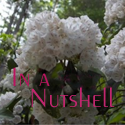
Summer of last year we had a great encounter with this very bold bird who happened to build her nest just behind our window. It took weeks for me to complete the
Robin's story which I posted on my other blog. From nesting until those little birdies left their nest. It was exciting seeing those birds and the protective parents being there all the time. There was a time while I was taking pictures of baby birds, momma bird was there watching her babies and all of a sudden she did a loud noise it was like she was calling daddy bird and in seconds just few feet away from me daddy bird came hovering trying to scare me. Even my hubby who happened to be by the window with another camera captured the protective parent with a monster look who was ready to attack. The time from hatching to when the babies leave the nest was supposed to be 14 days. We were surprised on the last day we checked the nest to find it empty - the babies took off early! Good Luck little birdies!
It is almost spring here in our area, I hope you come and visit us again and maybe sing for us once in a while.
Facts about Robins:
Robins pair for the duration of the year and may raise 3 broods during the year.The mother selects a nest site and builds the nest over about two weeks. The male may help gather material.It takes another two weeks to incubate the eggs. About every 40 minutes the mother will turn the eggs and get some food or something. The male may help sit on the eggs.
Read more!












